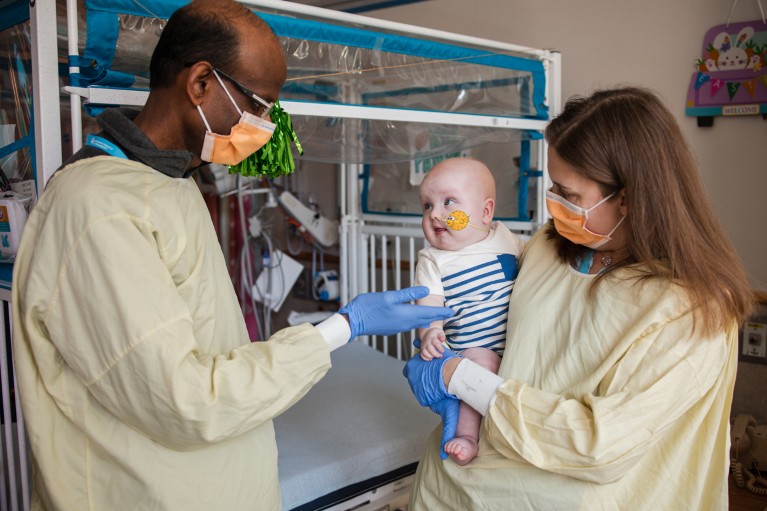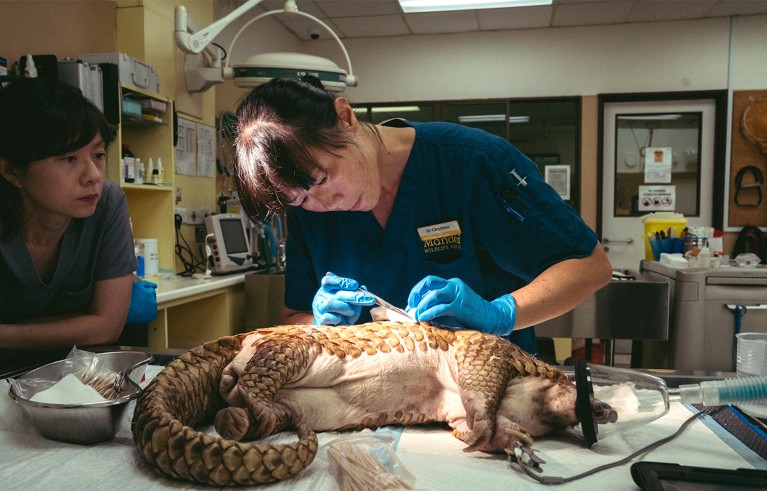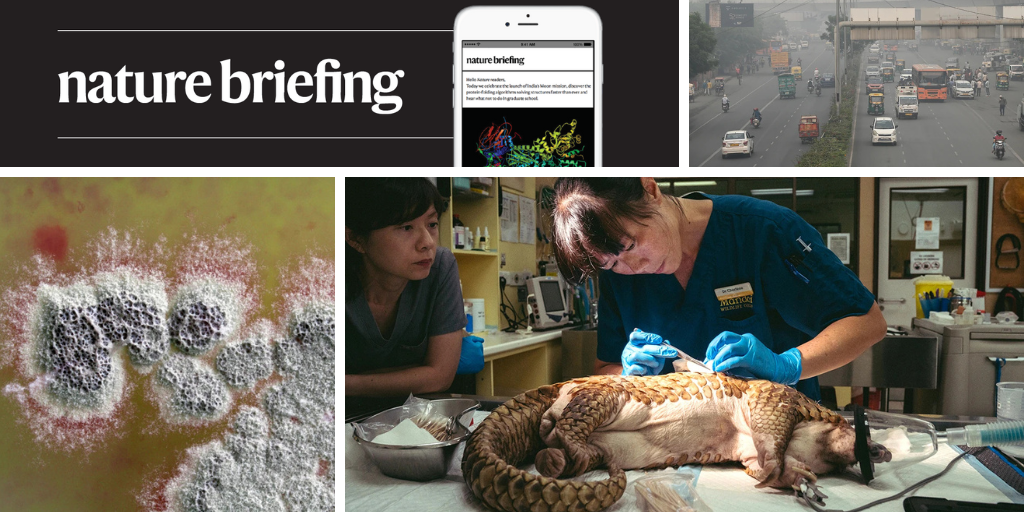You have full access to this article via your institution.
Hello Nature readers, would you like to get this Briefing in your inbox free every day? Sign up here.
Baby KJ Muldoon, who was born with a genetic disease that affected his ability to metabolize proteins, is the first person to receive a bespoke CRISPR treatment. Credit: Children’s Hospital of Philadelphia
After a cutting-edge, personalized gene-editing therapy saved baby KJ Muldoon’s life late last year, the researchers behind the feat are gearing up to do it again, at least five times over. Their clinical trial, expected to begin next year, will deploy an offshoot of the CRISPR–Cas9 gene-editing technique called base editing, which allows scientists to make precise, single-letter changes to DNA sequences. The treatment for KJ was produced in a record-breaking six months, “but I think we can get it shorter”, says cardiologist Kiran Musunuru, who was one of the baby’s doctors.
Reference: American Journal of Human Genetics paper
Scientists have discovered a powerful antibiotic while studying the process through which a soil bacterium naturally produces a well-known drug. The compound — called premethylenomycin C lactone — is more than 100 times more active against bacteria than the final product, antibiotic methylenomycin A, which was first identified in 1965. Tiny doses of the surprise discovery killed strains of bacteria known to cause hard-to-treat infections.
Reference: Journal of the American Chemical Society paper
An ambitious attempt by the Indian government to reduce Delhi’s toxic air pollution by inducing artificial rain has failed to trigger any precipitation. In the experiment last week, aircraft flew over the city and released particles of silver iodide and sodium chloride into the atmosphere to help water vapour to condense. Researchers say that the atmospheric conditions weren’t suitable for the experiment to succeed, but even if it had, such ‘cloud seeding’ attempts can’t solve Delhi’s pollution problem. “The obvious solution is also a boring one — clean up the sources,” says aerosol scientist Shahzad Gani.
Wood from a roughly 2,200-year old coffin, built for a Han soldier, reveals the climatic conditions that might have helped the Qin–Western Han dynasties flourish. In 2014, a study of tree rings from an ancient Egyptian coffin and funeral boat hinted at seasonal variations around 2000 bc. Especially in places where ancient forests were stripped away, “coffins often provide the only high-resolution evidence of regional environmental change”, says tree-ring scientist Chun Qin, who co-authored the Han Dynasty paper.
Reference: PNAS paper & Journal of Archaeological Science paper
Features & opinion
Francis Crick was notoriously reluctant to divulge personal information or even have his photograph taken. Nevertheless, zoologist and historian Matthew Cobb’s “magisterial” new biography manages to reveal how Crick’s life and work extended far beyond the DNA double-helix, writes science writer Georgina Ferry in her review — from revealing how information is transferred between DNA and the proteins it encodes, to ideas on the basis of consciousness.
The eight tiny islands of Saint-Pierre and Miquelon sit just a few kilometres from the coast of Canada and the main village, Miquelon, rises just 2 metres above sea level. The archipelago’s unusual history — it is the last territory of France in North America — and its vulnerability to sea-level rise means that Miquelon is the first French village being relocated because of climate change. Residents express a mix of optimism and wariness about the move to higher ground. “When you step on Miquelon, you feel its history, its soul,” says Bernard Briand, the territory’s president. “How do you recreate a soul?”
Where I work

Charlene Yeong is a veterinarian at Mandai Wildlife Group and assistant vice-president at Mandai Nature in Singapore.Credit: Amrita Chandradas for Nature
Charlene Yeong works as a veterinarian at Singapore Zoo. She uses the zoo’s facilities to treat both the park’s animals and wild ones. Here, she examines Berani, a Sunda pangolin (Manis javanica) that was brought to the zoo in 2018 after being injured, probably by a driver. “We’ll treat anything from pangolins to frogs, to primates such as langurs and orangutans, and even elephants; we see more than 4,000 animals a year,” she says. (Nature | 3 min read) (Amrita Chandradas for Nature)
On Friday, Leif Penguinson was ghost hunting in a spooky spot in Wistman’s Wood, a supposedly haunted temperate rainforest in Devon, United Kingdom. Did you find the penguin? When you’re ready, here’s the answer.
Thanks for reading,
Flora Graham, senior editor, Nature Briefing
With contributions by Jacob Smith
• Nature Briefing: Careers — insights, advice and award-winning journalism to help you optimize your working life
• Nature Briefing: Microbiology — the most abundant living entities on our planet — microorganisms — and the role they play in health, the environment and food systems
• Nature Briefing: Anthropocene — climate change, biodiversity, sustainability and geoengineering
• Nature Briefing: AI & Robotics — 100% written by humans, of course
• Nature Briefing: Cancer — a weekly newsletter written with cancer researchers in mind
• Nature Briefing: Translational Research — covers biotechnology, drug discovery and pharma


